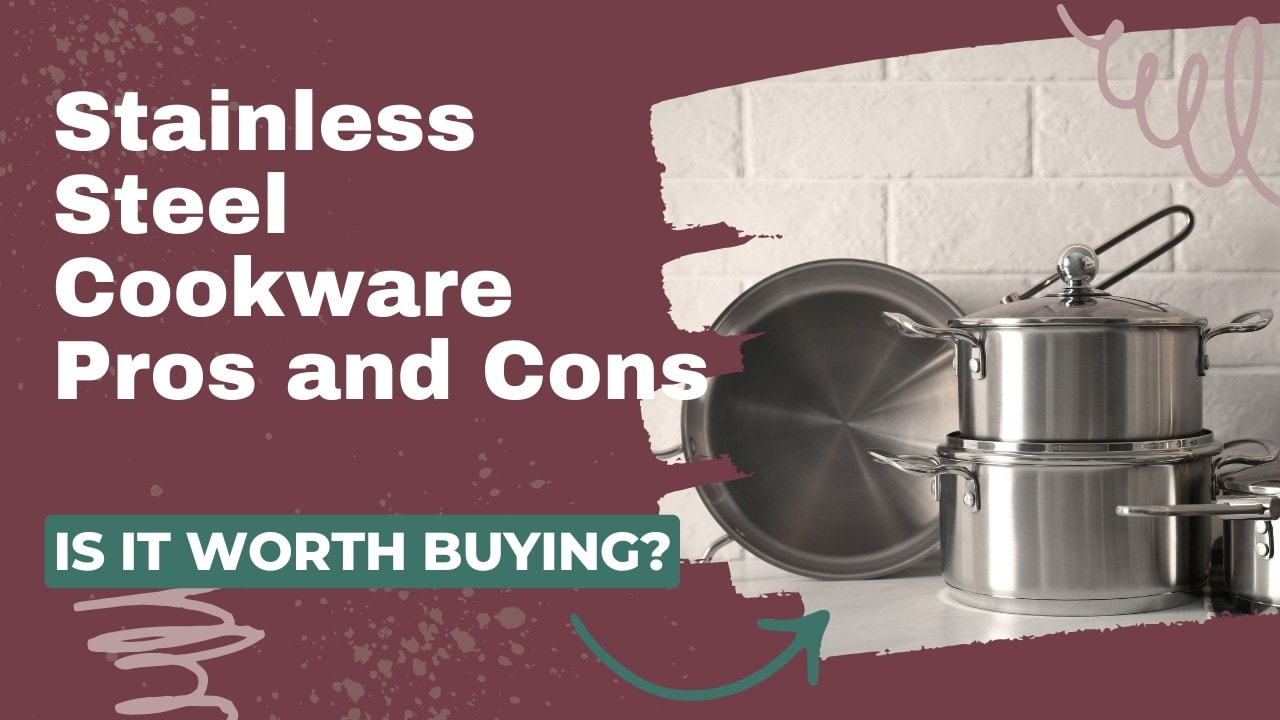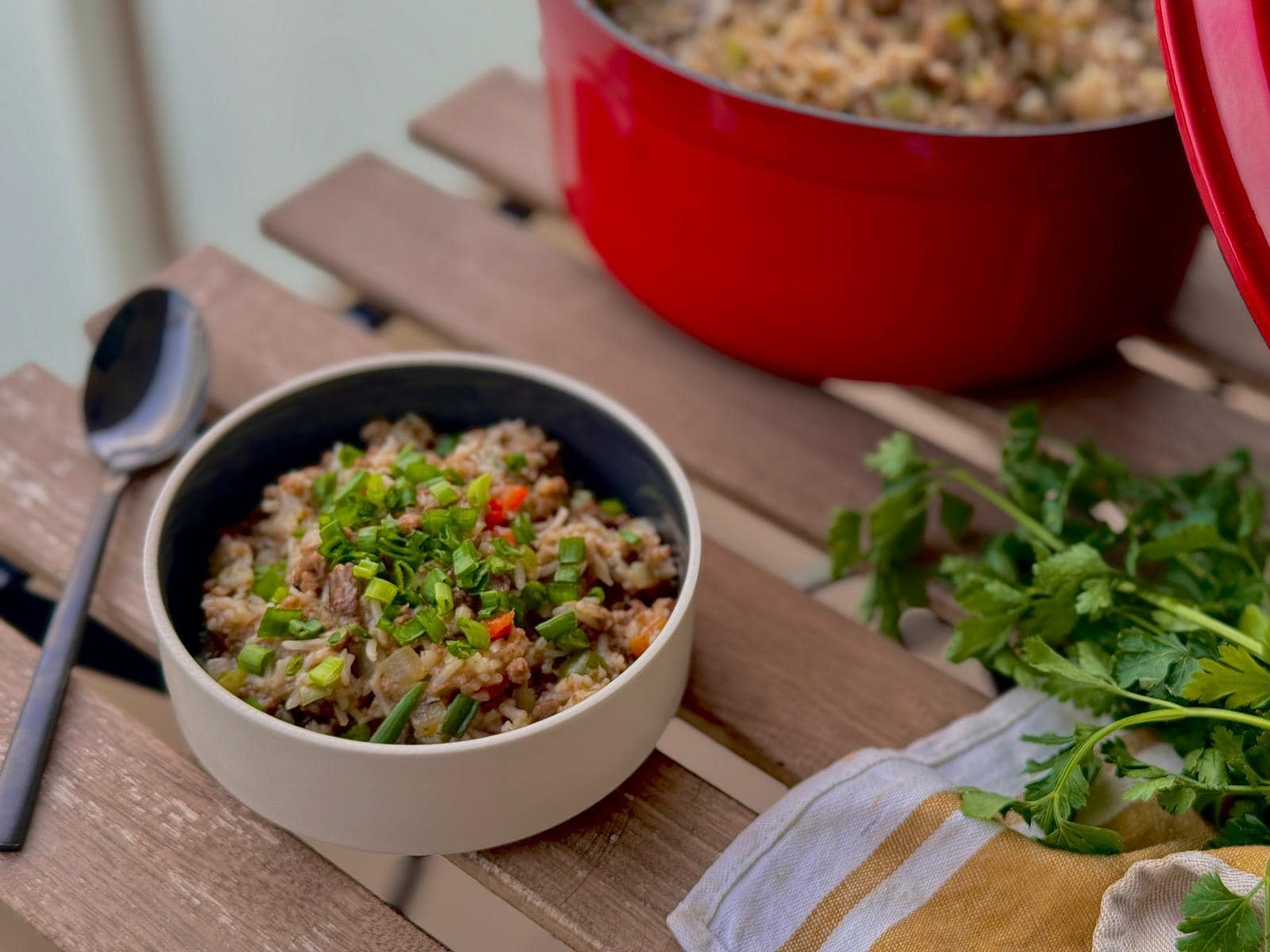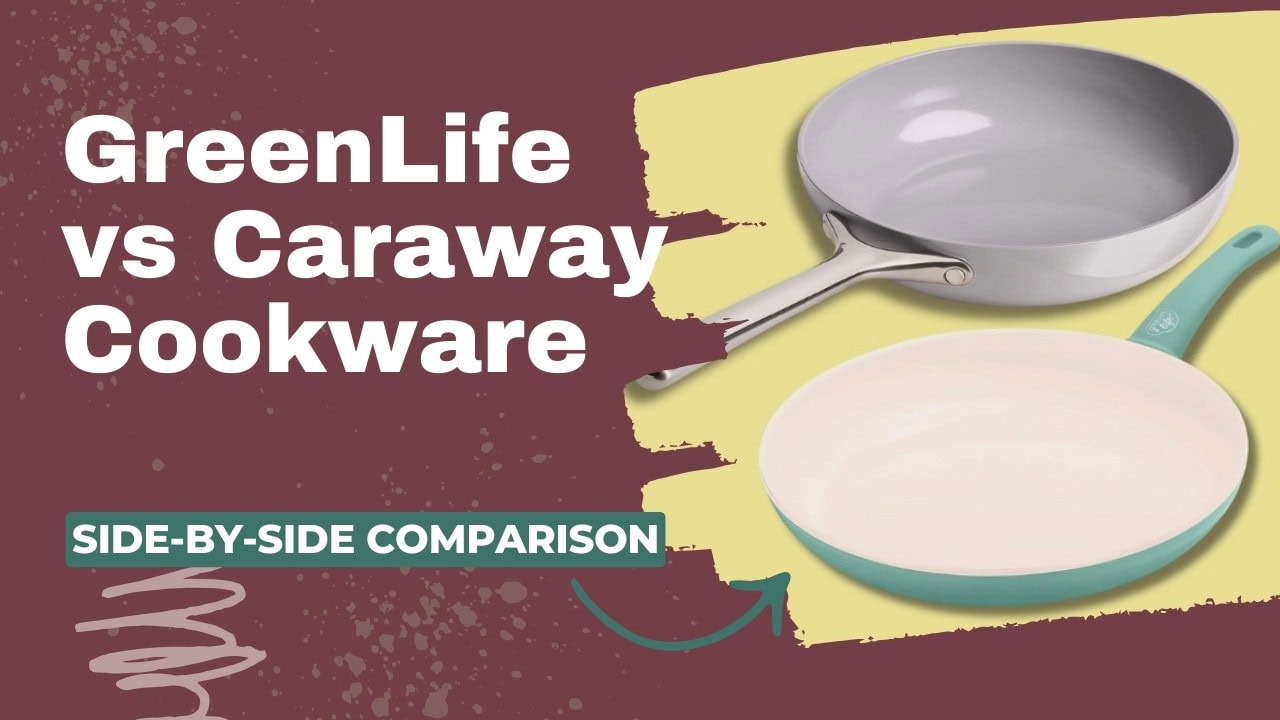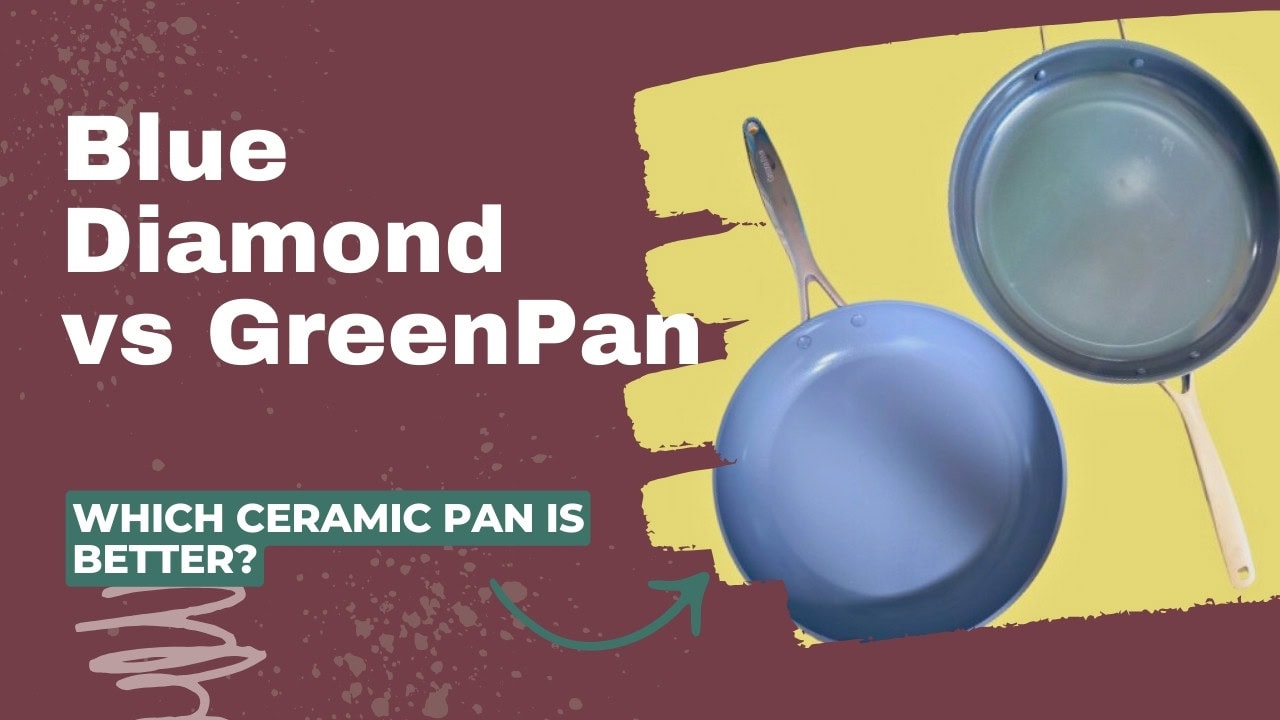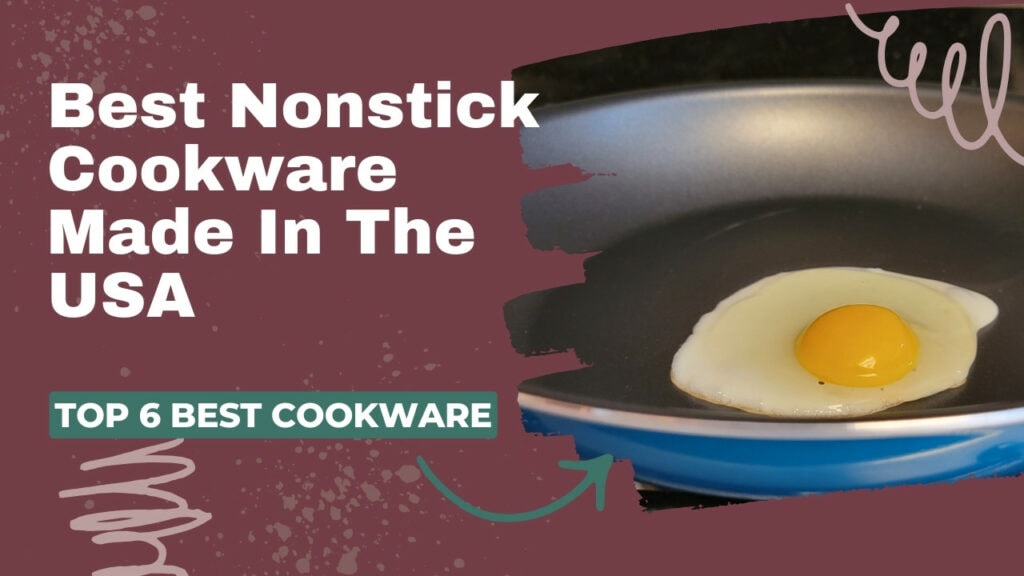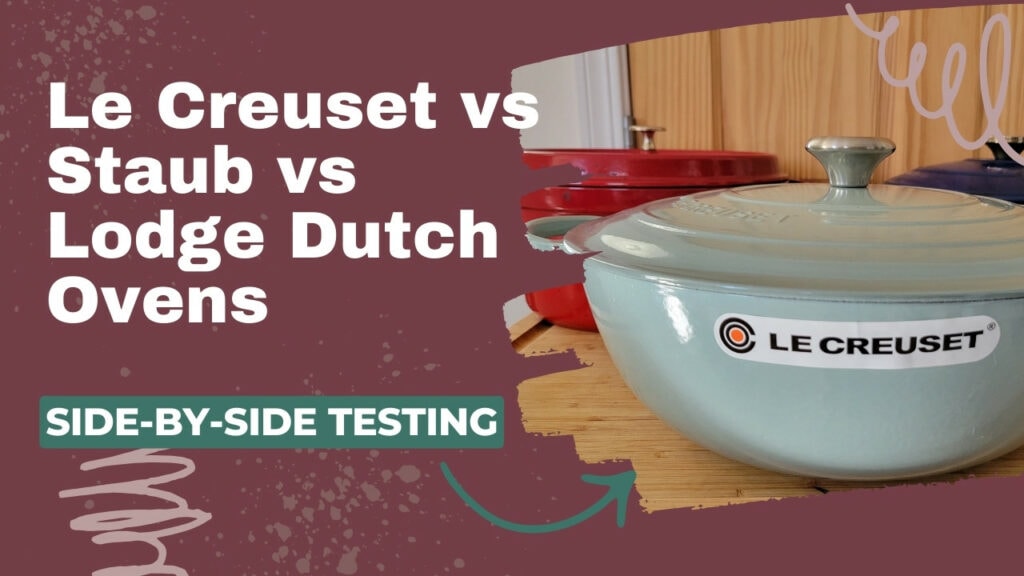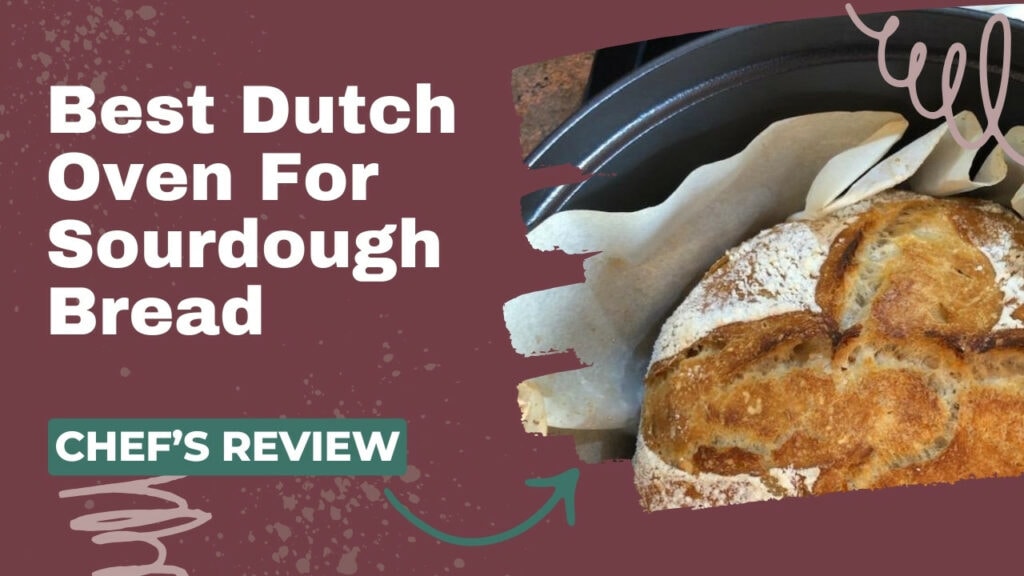Have you been eyeing up a shiny set of stainless steel cookware, but you haven’t been able to pull the trigger on bringing it home?
All cookware has its advantages and disadvantages; what works for some may not work for others. High-quality stainless steel isn’t cheap, so it’s important to understand if it will work for your lifestyle before you invest!
In this article, I’m going to break down all the pros and cons of stainless steel cookware so you know exactly what to expect.
Stainless Steel Cookware Pros and Cons
Here’s a quick list of pros and cons before we go into more detail.
Pros
Cons
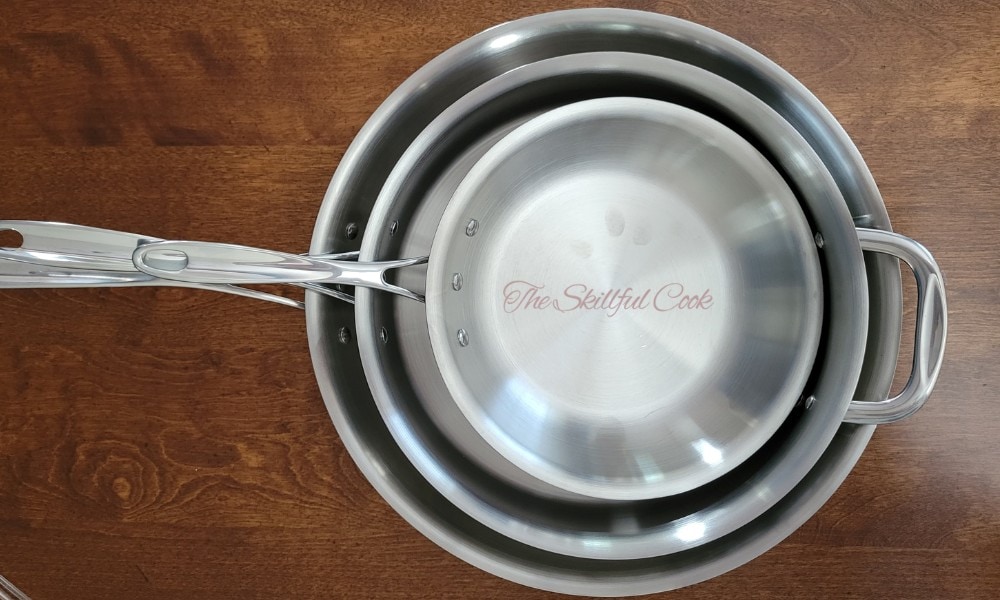
Advantages of Stainless Steel Cookware
1. Durable
Stainless steel is very strong with an almost impervious surface, which means it is highly resistant to scratches, dents, and corrosion. This makes these pans incredibly durable and long-lasting. Typically, it’s even safe to use metal utensils on the surface without risking deep scratches or other damage.
2. It Can Last Decades
Stainless steel is so durable, in fact, that you can pass it to the next generation if you care for it properly. This makes it a sustainable choice because you don’t need to replace your cookware every few years. The best way to make sure your stainless steel cookware lasts is to buy high-quality pieces from reputable brands. This Made In Stainless Steel Cookware Set is one of my favorites.
3. Heat Tolerance
Stainless steel can handle heat up to 600°F and is excellent for high-intensity cooking like searing steak. If well-made, it can withstand high temperatures without warping or releasing harmful fumes, making it suitable for intense cooking methods including searing and broiling. Not only that, stainless steel pans can also retain heat well, so your food will stay warm once it has been removed from the heat source.
4. Versatile
Stainless steel is oven-safe and compatible with most cooktops. Most stainless steel pans are induction-compatible because their bases are made of ferritic (low / zero nickel) stainless steel, but you should check the labeling for each product to make sure. I particularly like using stainless steel for glass cooktops because it won’t scratch them. This versatility means you can easily take your dish from the stovetop and into the oven to finish without dirtying another pan.
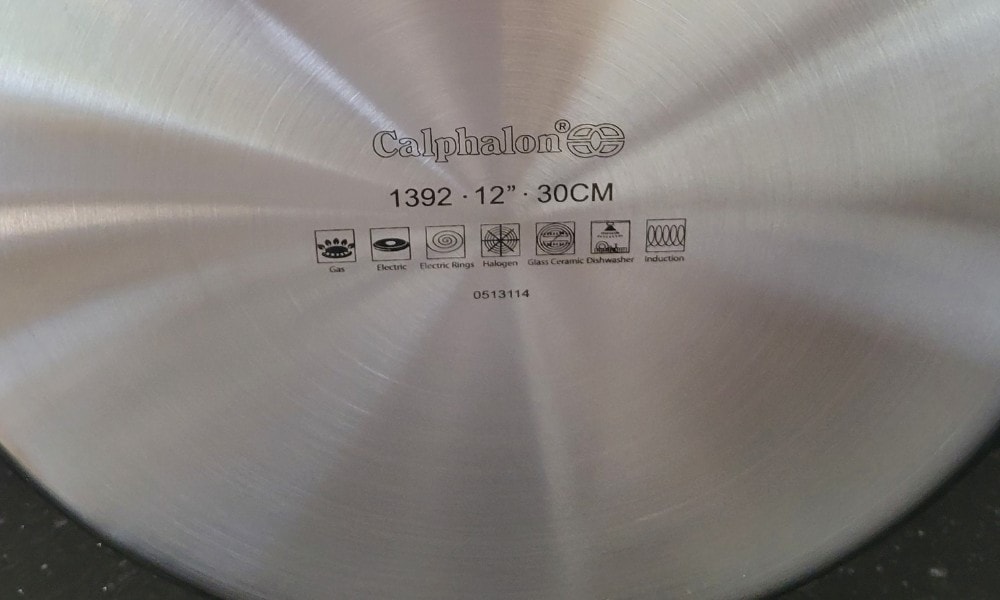
5. Non Reactive
The chromium content of stainless steel creates a layer of chromium oxide on the pan’s surface that is non-reactive. This ensures that it won’t impart unwanted flavors or react chemically with your ingredients, no matter how acidic they are.
6. Dishwasher Safe
Stainless steel is relatively easy to clean and maintain, especially when it’s seasoned. Most pans can be simply rinsed and popped in the dishwasher. If it is not used correctly, stainless steel can be a beast to clean because of sticking food and burn marks. To avoid this, take time to learn how to learn the secrets for cooking in stainless steel pans.
7. Aesthetically Pleasing
Stainless steel cookware has a sleek and modern appearance that fits well in many kitchen designs. Many other materials offer fun colors, but stainless steel keeps it simple and still looks beautiful. It is also less likely to stain or discolor compared to other materials like cast iron or copper.

8. No Chemical Coatings
Unlike some nonstick pans, stainless steel doesn’t contain any potentially harmful chemical coatings that could release toxins when heated. This makes it usually a top recommendation for non-toxic cookware. You can use any utensils on the surface without damaging any coatings.
9. Cool Handles
Stainless steel is a poor heat conductor, which makes it perfect for pot handles. Even aluminum pans usually have stainless steel handles because they don’t heat up very well. These handlesmay be safe on the stovetop, but they will still get very hot when used in the oven, so be sure to wear oven gloves when you remove them.
Disadvantages of Stainless Steel Cookware
1. Conducts Heat Slowly
Stainless steel does not conduct heat as evenly as some other materials, leading to hot spots that can cause uneven cooking. It also heats very slowly. But this is remedied by bonding or layering another more conductive material with stainless steel, like in these copper core All-Clad pans.
2. Food Stickiness
If you don’t preheat your pan to the right temperature or use adequate fats, stainless steel pans can be prone to food sticking to the surface. This means you can’t cook oil-free or fat-free in stainless steel. Cooking with these pans requires skill and practice to know when stainless steel is ready to keep food from sticking.
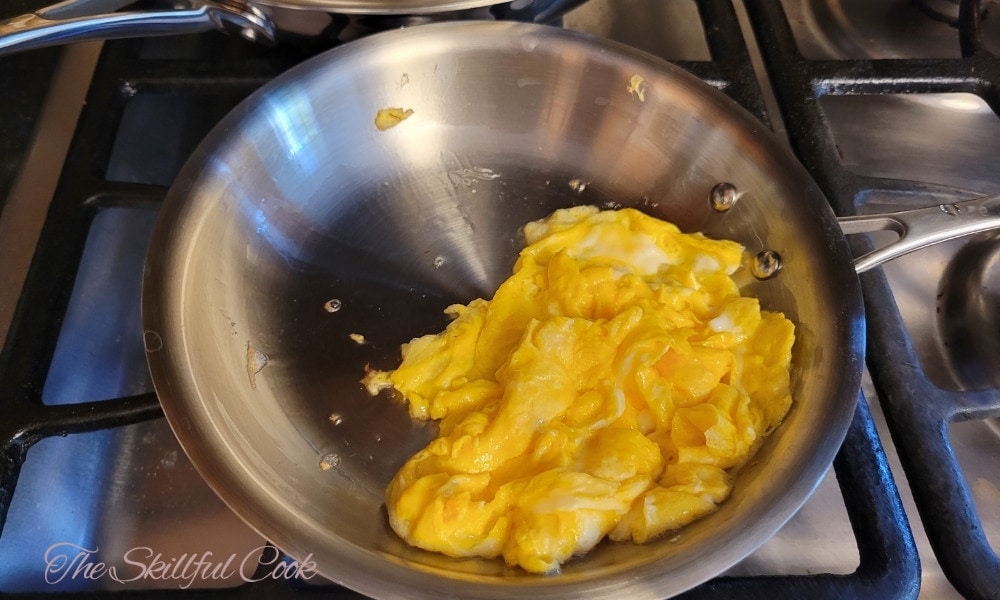
3. High Price Tag
High-quality stainless steel cookware can be expensive, especially when compared to nonstick alternatives. But, in my opinion, you get what you pay for. If you are able to spend the high price tag for heirloom quality stainless steel, you’re going to have that set for the rest of your life.
4. Weight
Stainless steel cookware is often heavier than other options like aluminum or nonstick pans. Some customers prefer this because the pans are less likely to move around when cooking. But this can be an issue for those with mobility issues or limited strength.
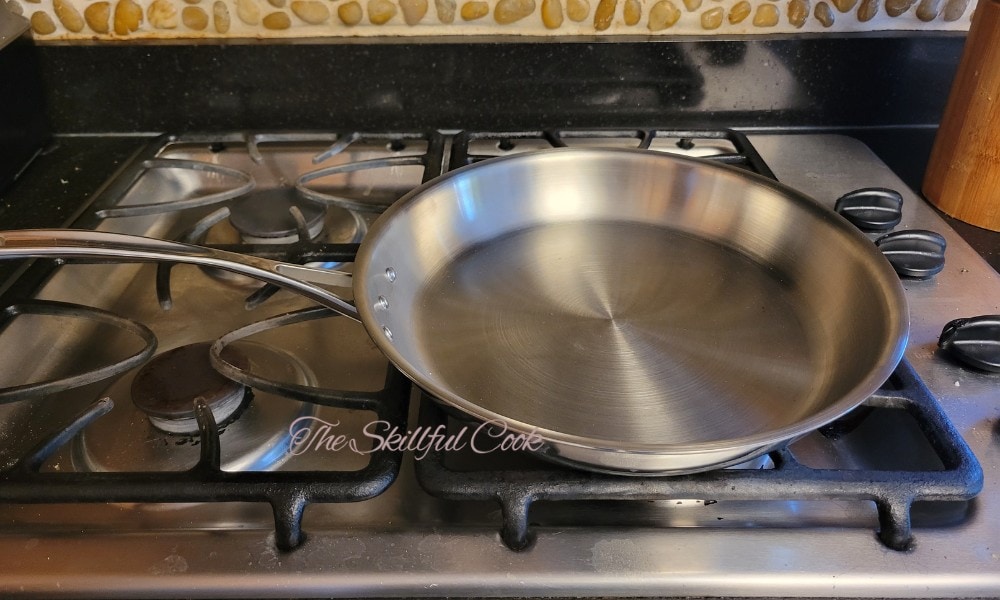
5. Requires Maintenance
Stainless steel cookware needs regular cleaning, polishing, and potentially occasional seasoning to maintain its appearance and performance. If you let this slip, you’re likely to find your food sticking more often.
6. Discoloration
Over time, stainless steel can develop a patina or discoloration, especially if exposed to high heat or improper cleaning methods. This can spoil the attractive appearance of stainless steel cookware. Fortunately, this discoloration is not harmful and can be removed using Bar Keeper’s Friend or more natural methods.
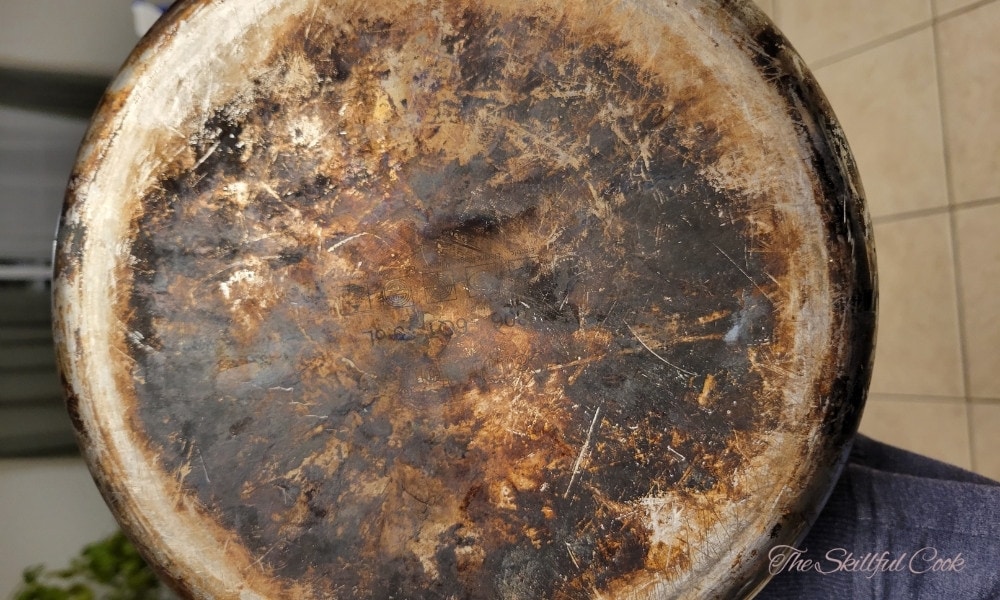
7. Nickel and Chromium Content
Stainless steel pans leach a small amount of the metals nickel and chromium when cooking, especially when new. Generally, these leachable levels in stainless steel are considered safe for most consumers, but that all changes if you have a nickel or chromium allergy. A small dose of nickel can cause dermatitis and other reactions in those with nickel sensitivities, so they should stick to nickel-free stainless steel cookware.
Conclusion
As you can see, stainless steel cookware has a lot of pros and cons, but, in my opinion, it’s well worth the investment. I hope this comprehensive list has helped you make a decision whether or not to buy it for yourself.
#1 Recommendation: Made In Cookware – 10 Piece Stainless Steel Pot and Pan Set
If you want a recommendation for a great stainless steel cookware, I recommend this set from Made In.
As always, if you have any questions, don’t hesitate to comment; we’re here to help.

